|
Beehives of Invention Edison and His Laboratories |
 |
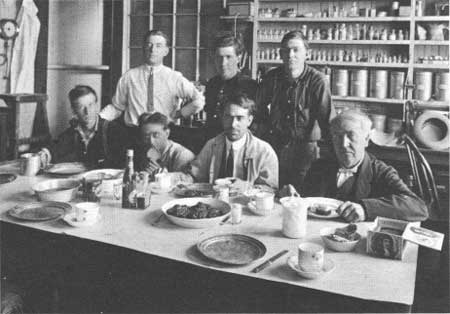 About to eat a quick meal in the lab are members of an Insomnia Squad, so called because of long hours they spent on many experiments: seated from left, Johnny LaMonte, Billy Fulton, Sam Moore, Edison; standing, from left, Ed McGlynn, Bob Spahle, and Archie Hoffman. |
They Worked For Edison At West Orange
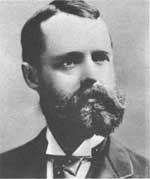 Francis Upton was one of Edison's closest assistants at newly built West Orange. |
Edison's many experimental projects and business interests kept the West Orange area humming with activity from 1887 to 1931. The refinement of the phonograph, developments in the motion picture field, experimentation with the storage battery, the search for a domestic source of rubber, and work on numerous lesser known ventures required a large staff of technical engineers, skilled workmen, unskilled laborers, and clerks. For years, Edison's chief theoretical assistant was Francis Upton.
As Edison always wanted to know what had been done before in this or that line, Upton saved himself lots of time by studying up the subject and then acquainting Edison with the facts. Edison liked and respected Upton, for the latter had acquired a brilliantly profound theoretical store of knowledge. And under Edison's guidance he soon gained the necessary experience to make theory and practice meet. It was always edifying to listen to their arguments, and often a group of us would gather round and drink in every word that was spoken. Reasonings and sparrings between Edison and Upton often led to new experiments in which perhaps Batchelor's deft fingers or Kruesi's machine shop knowledge took part.
Francis Jehl, Menlo Park Reminiscences, 1938
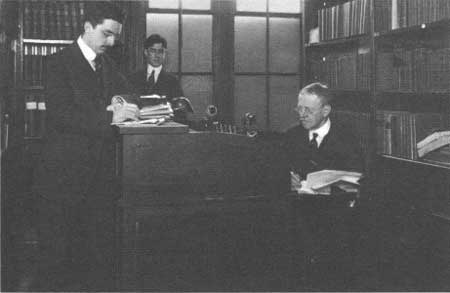 Behind his desk, tending to the voluminous paperwork, is William H. Meadowcroft. |
At times Edison the empiricist would become irritated with the theoretical approaches of Upton and others on the staff.
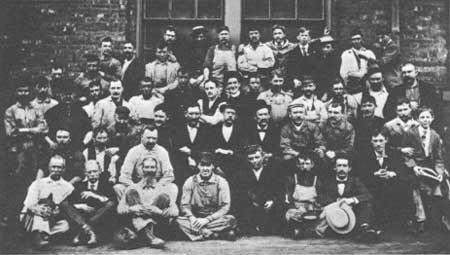 The names of his young aides and of many other hard-working employees have been forgotten, but all played a part in making the invention factory run smoothly. |
I was once with Mr. Upton calculating some tables which he had put me on, when Mr. Edison appeared with a glass bulb having a pear-shaped appearance in his hand. It was the kind that we were going to use for our lamp experiments; and Mr. Edison asked Mr. Upton to please calculate for him its cubical contents in centimeters. Now Mr. Upton was a very able mathematician . . . . Whatever he did and worked on was executed in a purely mathematical manner, and any wrangler at Oxford would have been delighted to see him juggle with integral and differential equations, with a dexterity that was surprising. He drew the shape of the bulb exactly on paper, and got the equation of its lines with which he was going to calculate its contents, when Mr. Edison again appeared and asked him what it was. He showed Mr. Edison the work he had already done on the subject, and told him that he would very soon finish calculating it. 'Why,' said Edison, 'I would simply take that bulb and fill it with mercury and weigh it; and from the weight of the mercury and its specific gravity I'll get it in five minutes,' and use less mental energy than is necessary in such a fatiguing operation.'
Francis Jehl, Menlo Park Reminiscences, 1938
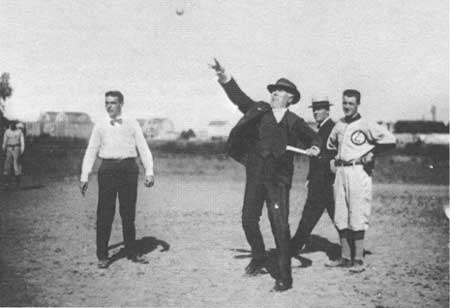 Occasionally, the employees, and even the seemingly tireless Old Man, would relax at a company picnic. |
Edison seldom worked with his own hands. He had a mechanical man who did all the manipulating, while the master did the experimenting in his head. The mechanical man was named Freddie Ott, rotund, healthy, honest, exceedingly deft with his fingers; a tireless worker who felt tired all the time because he was out of sympathy with Edison's enterprising restlessness. Edison soon re-introduced himself and Freddie to me by pointing to himself as "Don Quixote" and to Freddie as "Santcho Pantcho." Edison himself was generally referred to as The Old Man. He had nicknamed his experimenters "Muckers," he himself being the chief Mucker.
M. A. Rosanaoff "Edison in his Laboratory," Harpers Magazine. September 1932
 Fred Ott works on an experiment, as someone, perhaps a reporter, takes notes. |
Then there was William H. Meadowcroft, who was Edison's "right arm," for more than half a century; he remained with him as his personal secretary to the day of the inventor's death. Meadowcroft's services were of incalculable value; he was for years the great inventor's contact with the public; his diplomacy and courtesy won him the love and respect of the public press and of the many distinguished guests of the inventor. To see Edison, it was first necessary to see Meadowcroft, and when you met Meadowcroft, you met a diplomat.
Francis O. Miller, Thomas A. Edison: An Inspiring Story for Boys, 1940
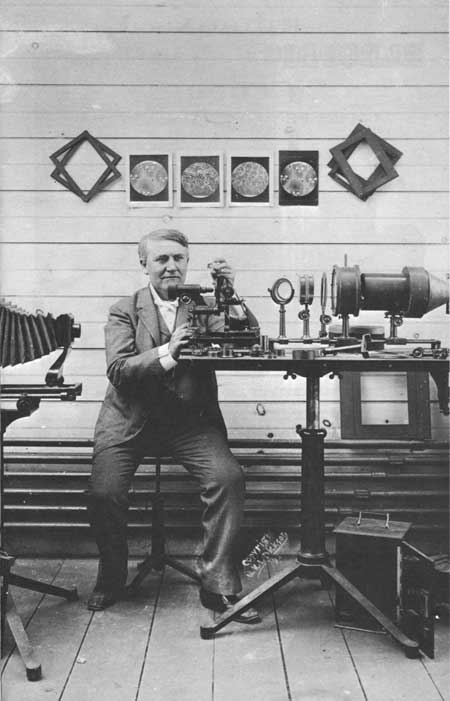 Edison, while moving ahead on his major projects, usually dabbled in related fields, such as micrography. |
|
|
|
Last Modified: Thurs., May 19 2005 10:00:00 am PDT |


